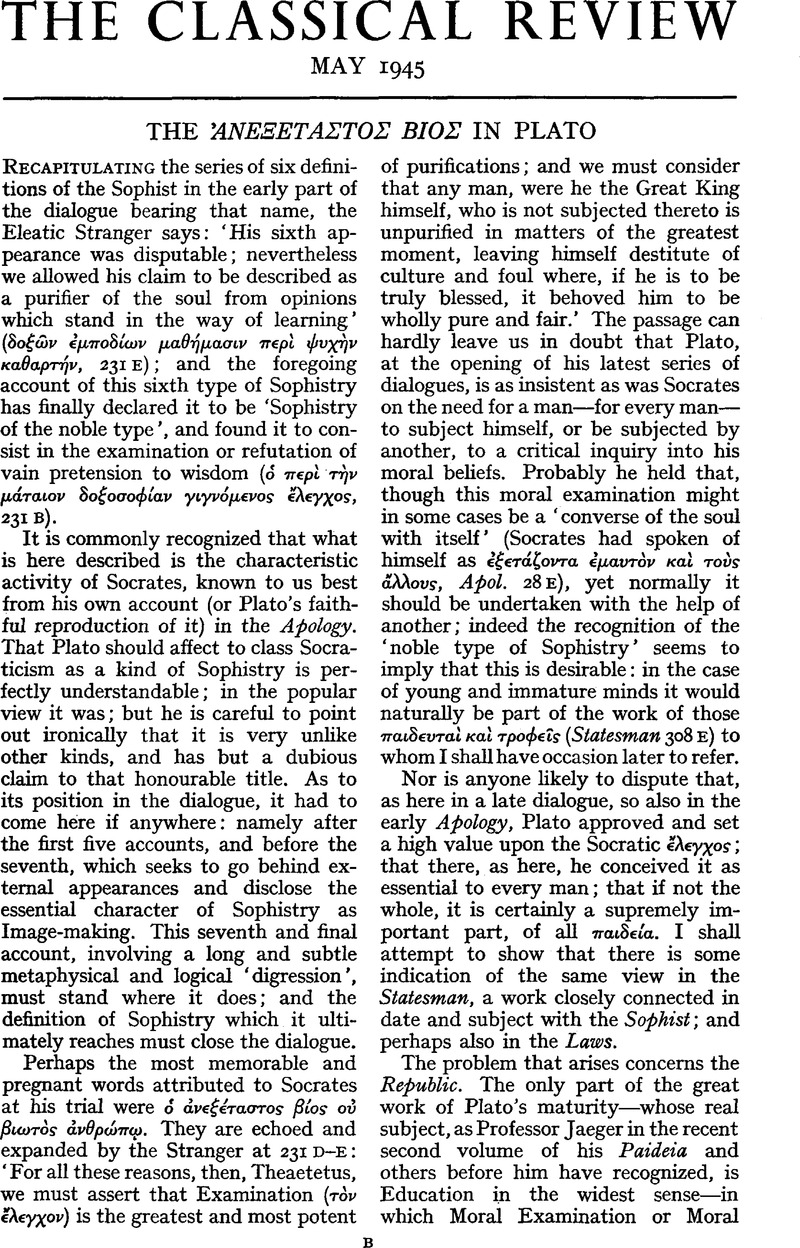Article contents
The Ἀνεξεαστοσ Βιοσ in Plato
Published online by Cambridge University Press: 27 October 2009
Abstract

Information
- Type
- Review Article
- Information
- Copyright
- Copyright © The Classical Association 1945
References
page 2 note 1 ![]() , 538 D.
, 538 D.
page 2 note 1 ![]() 539 C.
539 C.
page 2 note 2 e.g. Raeder, , Platons phil. Entwickelung, p. 231:Google Scholar ‘Früher hatte P. die Neigung der Jugend, die Sokratische Fragemethode nachzuahmen, gunstiger beurteilt.’ Cf. Cornford in Mind, xli. 184.
page 2 note 3 Companion to Plato's Republic, p. 306.
page 3 note 1 From a comparison of Socrates' account of his mission in the Apology with the description of cathartic sophistry in the Sophist it seems clear that Plato thinks of the purging of false beliefs and the purging of δοξοσοφία as identical.
page 3 note 2 Although much in ii-iii bears upon the conduct of mature guardians, the scheme of education as such, together with the propaedeutic mathematical studies pursued χύδην, is intended for boys and girls under 18. This is implied at 537 B.
page 3 note 3 Cornford's translation.
page 3 note 1 ![]() 282 C.
282 C.
page 3 note 2  305 E.
305 E.
page 4 note 1 Compare 29 E with 30 A-B.
page 4 note 1 Taylor, A. E., The Laws of Plato, Introd. p. lxif.Google Scholar
page 4 note 1 809E. Cf. Baiker, E.,Greek Political Theory, p.378.Google Scholar
page 4 note 3 966 C, Taylor's translation.
page 4 note 4 6S3 B, Taylor's translation.
- 1
- Cited by

